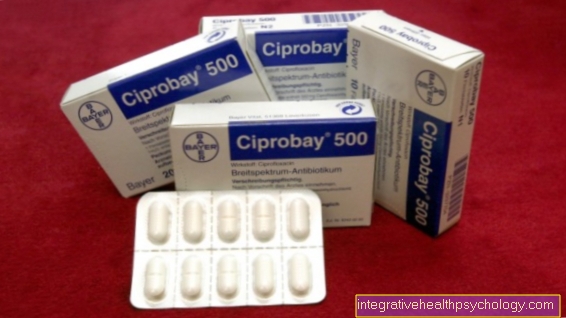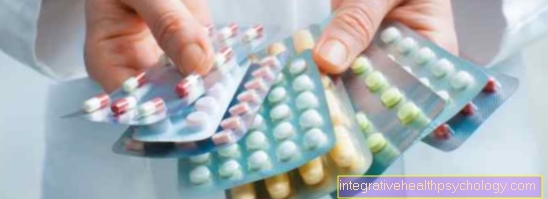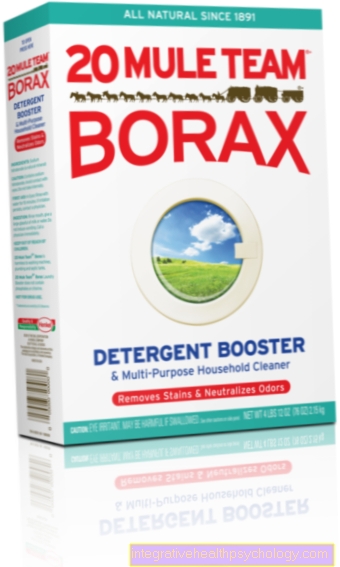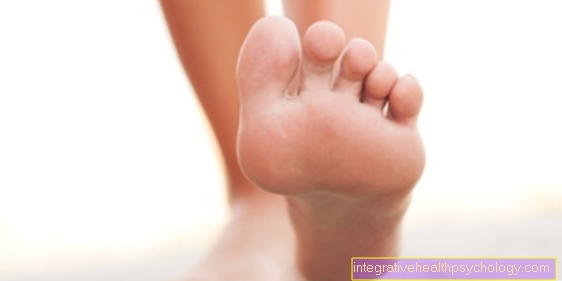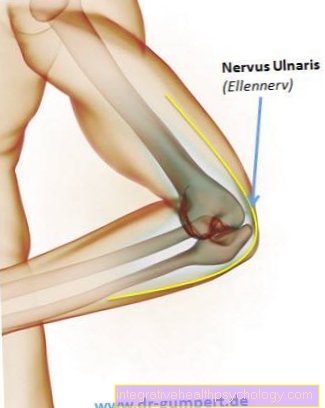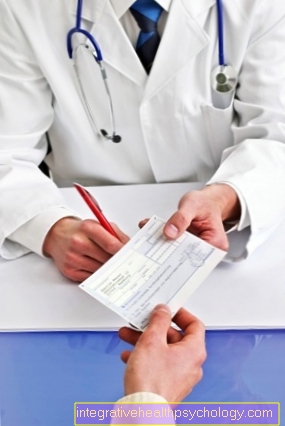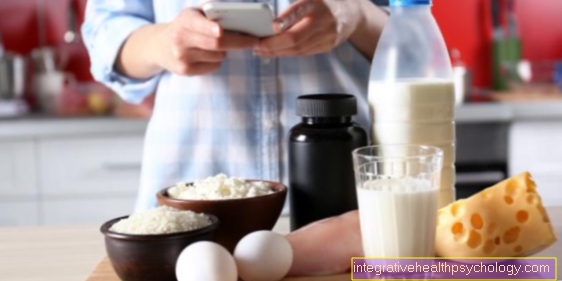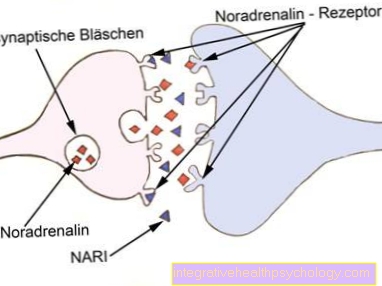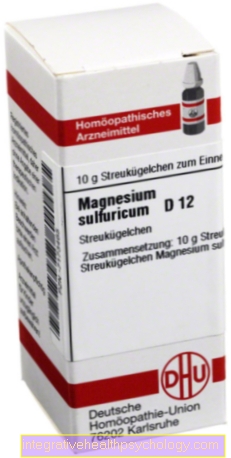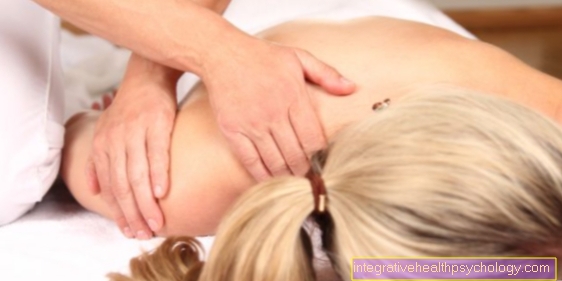Bromelain
introduction
Bromelain has anti-inflammatory and anti-coagulant effects. It stands for a group of protein-degrading enzymes from certain plants. These special enzymes can be found in the pineapple plant, among other things. Therefore it is also included in the group of so-called phytotherapeutic agents, which are also known as herbal medicines.
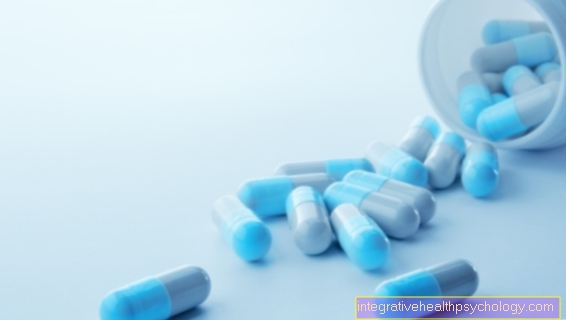
Due to its specific effects, bromelain is used to treat inflammation or injuries associated with swelling. It is also used in edema treatment. Bromelain is available from pharmacies under the trade names Bromelain-POS ©, Wobenzym © or Traumanase ©.
Application and dosage
The most common form of application of the drug bromelain is the so-called enteric-coated tablet. Bromelain can also be purchased in the form of dragees. Although it is only available from a pharmacy, it does not require a prescription, so that it can be freely purchased in the pharmacy.
Thanks to a special protective film, the tablets pass through the stomach without being broken down by the stomach acid. This is necessary because the stomach acid already digests proteins from food in the stomach. It is therefore important that the active ingredient is only released in the intestinal area and can thus be absorbed by the blood, otherwise it will be digested and thus lose its effectiveness.
Use for bromelain is only approved for adults and adolescents aged 12 and over. Therefore, there is a contraindication to taking bromelain for children under 12 years of age.
The tablet should be swallowed with plenty of liquid about 30 minutes apart from a meal. Bromelain should be taken as a tablet once or twice a day. The intake should not last longer than four to five days without medical advice. A doctor should be consulted for longer treatment.
No intoxication is known from the administration of bromelain. However, an overdose can increase the incidence of side effects.
Which complaints does bromelain help against?
Due to the anti-inflammatory and decongestant effects of bromelain, it can be used for various diseases.
It can be used, among other things, for postoperative swelling or swelling in the context of injuries. Bromelain can also be used for non-bacterial swelling of the mucous membrane.
If there is a lack of production and availability of digestive enzymes, for example in the context of a disease of the pancreas, the administration of bromelain can be helpful. It can also be used for inflammation of the paranasal sinuses or the lower urinary tract and the genital organs.
Bromelain can also be taken for venous diseases or pelvic and leg vein thrombosis as well as osteoarthritis. In higher concentrations, it also has a dehydrating effect on the human body, so that it can also be used to treat edema.
For sinusitis
The main effect of bromelain is an anti-inflammatory, decongestant effect. For this reason, the active ingredient is often used in sinusitis and often achieves good treatment results here.
The effect is based on the breakdown of the body's own tissue hormone bradykinin. This is responsible for widening the small blood vessels. If the bradykinin is now split by the enzymes contained in the bromelain, the blood vessels in the paranasal sinuses narrow and less fluid gets from the vessels into the surrounding tissue - the swelling decreases.
The mechanism underlying the anti-inflammatory effect of bromelain, however, has not yet been clarified. It is important to take the bromelain at least 30-60 minutes before eating to develop its effectiveness.
Before and after an operation
Due to its decongestant and anti-inflammatory effects, bromelain can also be used before and after surgery. Before the operation, for example, it can help to combat joint swelling and thus create the necessary conditions for the operation.
After the operation, the bromelain helps reduce the swelling of the surgical area and also prevents the development of inflammation. However, bromelain is not yet known to have a pain-relieving effect, so that other active ingredients must be used for this aspect of postoperative treatment.
In case of allergy or histamine intolerance
Like virtually all medicines, bromelain can cause allergic reactions. This usually manifests itself in the form of rashes and tingling in the mouth area. These are usually harmless and go away on their own after a few days, but in rarer cases they can also be harbingers of more serious forms and should therefore result in a return to the attending physician as soon as possible.
Bromelain is also used in the food industry for clarifying beer and processing meat. For this reason, bromelain should be considered as a possible food allergy trigger.
When should I not take bromelain?
The use of bromelain is contraindicated in case of hypersensitivity to the active ingredient and hypersensitivity to pineapple.
Patients with bleeding disorders should also avoid taking the drug bromelain. Simultaneous use with so-called blood thinners such as Marcumar, heparin or similar substances should be avoided. The drug is not suitable for children or adolescents under the age of 12.
No data are available on the use of bromelain during pregnancy, so it is not recommended to use it during pregnancy. Bromelain should also not be used during breastfeeding, as it is not known whether its components pass into breast milk and thus reach the infant.
Is bromelain suitable for long-term use?
Although no specific negative consequences of long-term use of bromelain have been identified so far, the following should apply as always: as much as necessary, as little as possible. Therefore, bromelain therapy should initially be limited to 5 to a maximum of 7 days. If the situation has not improved noticeably after this period, the attending physician should be consulted again. He or she can weigh up whether a continuation of the bromelain therapy promises success or whether switching to another active ingredient makes more sense.
Use during pregnancy and breastfeeding
So far no data are available on the tolerability of bromelain in pregnancy. Since a risk to mother and child cannot be excluded, taking bromelain during pregnancy is not recommended.
The same applies to breastfeeding: Here, too, it is not known whether the agent can be transmitted through breast milk and whether in this case it can harm the child. As a result, bromelain should not be used while breastfeeding.
Interactions
If bromelain is taken at the same time as other drugs, the absorption of the additional drug can be increased. This leads to an increase in absorption and an increase in effectiveness.
Taking an antibiotic and bromelain at the same time can lead to an increase in the antibiotic level in the urine and an increase in the concentration level in the blood. A patient's tendency to bleed may increase if bromelain is taken with anti-coagulants. These include the drugs that belong to the group of anticoagulants and platelet inhibitors and have a significant effect on blood clotting.
Is it okay with alcohol?
Although there have been no reports of specific intolerance between bromelain and alcohol, the data on this topic is extremely thin. In principle, it should apply in any case that alcohol should be avoided as far as possible while taking drugs. Otherwise the liver could be overwhelmed and damaged by the simultaneous breakdown of alcohol and medication. However, since the liver is not particularly susceptible to bromelain, moderate alcohol consumption is usually classified as harmless and therefore permitted.
Side effects
When taking bromelain, like any other drug, side effects can always occur. Asthma-like symptoms often occur during therapy. Allergic reactions and skin reactions are also common side effects when taking bromelain.
In contrast, there are only occasional gastric discomfort or diarrhea. There are no known negative effects or limitations on the ability to drive.
Alternatives to bromelain
Depending on the area of application of the bromelain, there are various alternatives for the active ingredient.
In the case of sinusitis, for example, steam inhalation, infrared treatments or nasal irrigation are often used. Decongestant or anti-inflammatory nasal sprays also have a similarly good effect as bromelain. As effective home remedies, increased drinking volume and elevation of the head during the night have proven to be particularly effective.
For other swellings (e.g. joint swelling as a result of sports accidents) ibuprofen, paracetamol or diclofenac can be used as anti-inflammatory alternatives to bromelain. The decongestant component of bromelain can be replaced by cooling, compression bandages and various home remedies (e.g. quark remedies).
effect
Bromelain is a so-called proteolytic enzyme that has the ability to break down proteins. It is obtained from the pineapple plant.
Above all, it dissolves fibrin, which is an endogenous protein and, among other things, plays a role in blood clotting. By shredding the proteins, they can be removed more quickly and the swelling of the tissue decreases.
In addition, bromelain prevents platelets from accumulating. If the platelets cannot assemble properly and quickly, the bleeding time will be prolonged. This mechanism is particularly important for those who also take anticoagulant medication (e.g. Marcumar), as the effects are intensified and bleeding can increase.
The protein-splitting ability of the phytotherapeutic can also be used for digestion. Taking bromelain with meals can support and promote the body's natural digestion.
Bromelain also has an influence on the tissue hormone bradykinin. Bromelain breaks down and blocks this hormone, making the capillaries more impermeable to fluid. The impermeability leads to a reduced leakage of liquid into the tissue. This in turn leads to a decrease in edema.
Metabolism
Bromelain is absorbed in the human intestine and from there enters the bloodstream. In the blood it binds to the so-called alpha2 macroglobulin. Macroglobulins are transport proteins that can bind certain substances in the blood and thus transport them to their destinations. Bromelain is rapidly metabolized by the liver and thus eliminated from the circulation.
Do you need a prescription?
Bromelain is only available from a pharmacy, but does not require a prescription. It can only be sold by pharmacies, but no prescription is required. Nevertheless, it is advisable not to act on your own, but to consult a doctor first. They can assess the necessity, usefulness and risks of Wobenzym therapy and finally also write a prescription, which can also reduce the amount to be paid in the pharmacy.
Recommendations from the editorial team
You can find further related information that may be of interest to you at:
- Wobenzym ©
- Edema leg
- Leg vein thrombosis
- post-operative pain
Exclusion of liability / disclaimer
We would like to point out that medication must never be discontinued, applied or changed independently without consulting your doctor.
Please note that we cannot claim that our texts are complete or correct. The information may be out of date due to current developments.





